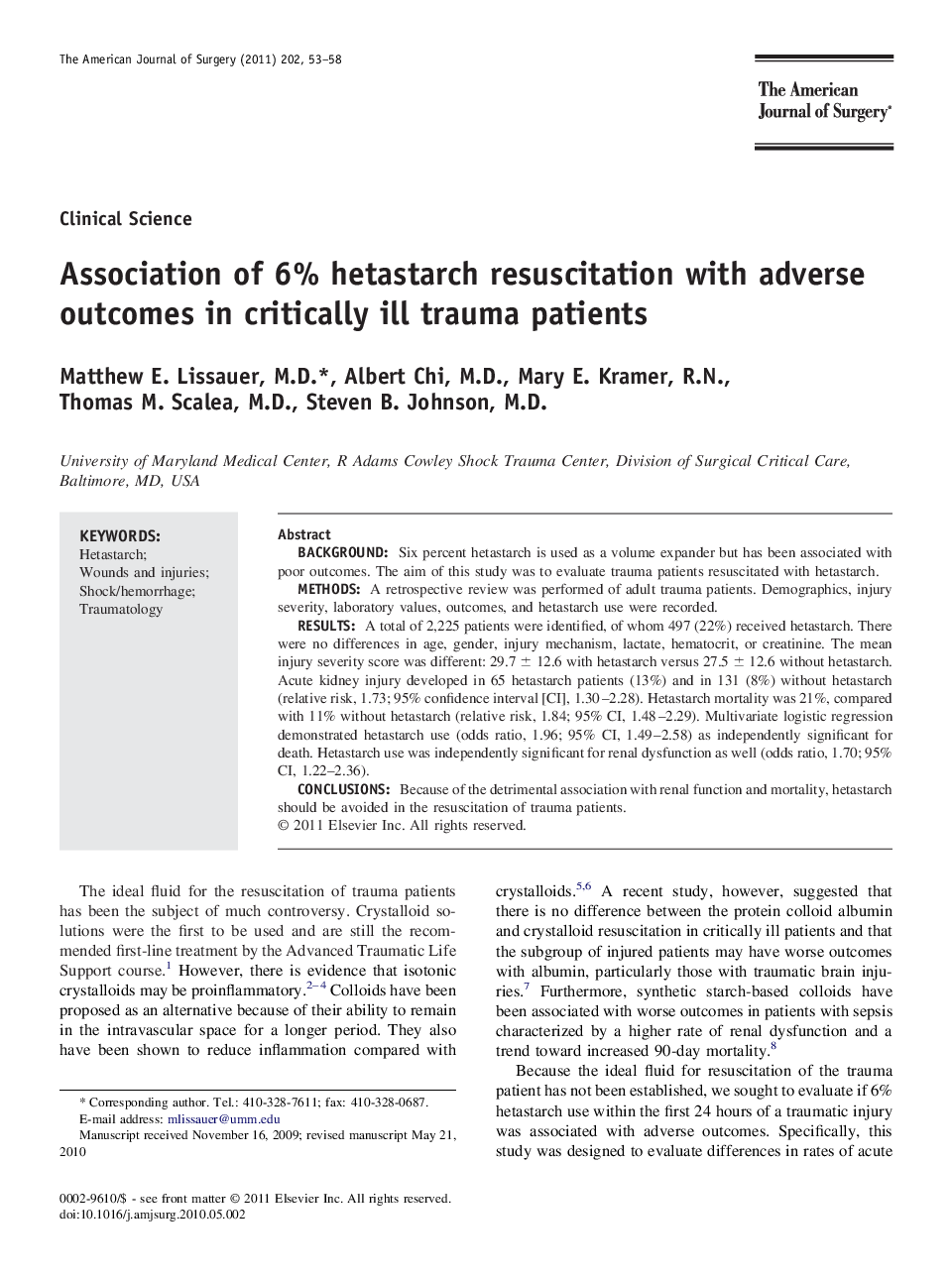| Article ID | Journal | Published Year | Pages | File Type |
|---|---|---|---|---|
| 4279642 | The American Journal of Surgery | 2011 | 6 Pages |
BackgroundSix percent hetastarch is used as a volume expander but has been associated with poor outcomes. The aim of this study was to evaluate trauma patients resuscitated with hetastarch.MethodsA retrospective review was performed of adult trauma patients. Demographics, injury severity, laboratory values, outcomes, and hetastarch use were recorded.ResultsA total of 2,225 patients were identified, of whom 497 (22%) received hetastarch. There were no differences in age, gender, injury mechanism, lactate, hematocrit, or creatinine. The mean injury severity score was different: 29.7 ± 12.6 with hetastarch versus 27.5 ± 12.6 without hetastarch. Acute kidney injury developed in 65 hetastarch patients (13%) and in 131 (8%) without hetastarch (relative risk, 1.73; 95% confidence interval [CI], 1.30–2.28). Hetastarch mortality was 21%, compared with 11% without hetastarch (relative risk, 1.84; 95% CI, 1.48–2.29). Multivariate logistic regression demonstrated hetastarch use (odds ratio, 1.96; 95% CI, 1.49–2.58) as independently significant for death. Hetastarch use was independently significant for renal dysfunction as well (odds ratio, 1.70; 95% CI, 1.22–2.36).ConclusionsBecause of the detrimental association with renal function and mortality, hetastarch should be avoided in the resuscitation of trauma patients.
